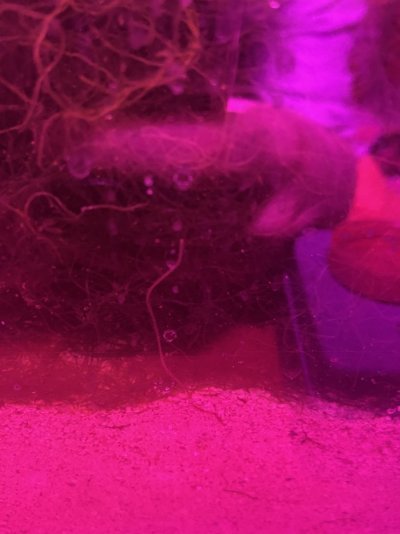Hello, I was doing an examination of my refugium (as I do from time to time- it's fun watching the creatures do their thing), and I saw these worms up against the glass. They had tunnels in the sand (I have no rock down there, so it could be that they live in rocks as well), and they creep out (presumably in search of food), and then quickly retreat when the water is disturbed. I know it's predatory on tubeworms (as I watched it slurp up a micro duster). I thought it was some type of eunice worm, but when I saw it eat the micro duster, it looked like it slurped it up then retreated into its hole rather than sink its fangs in, drag it back to the hole, then eating it. Also, I couldn't make out any tentacles on its head, even though a eunice has 5. Since I saw it eat a feather duster, does that mean its diet may only be tube dwelling worms, or should I be worried about it eating other things?
I attached a few pictures of one, though I'm not sure how helpful they'll be. I'll try to get one into a clear container.



I attached a few pictures of one, though I'm not sure how helpful they'll be. I'll try to get one into a clear container.
















